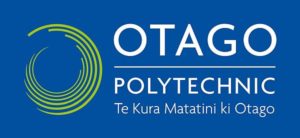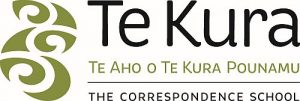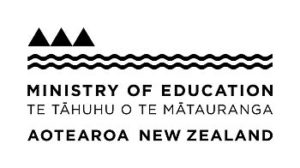“Most jobs are now only posted online, and on top of this, employers are increasingly looking for people with good digital skills.” Jordan Carter, InternetNZ
It is important for learners to be digitally savvy and creative in an online world.
Access to technology and digital skills have become increasingly essential for people to fully participate in society and the economy. Digital exclusion is a new measure of poverty. The poor and low skilled are being left behind in the digital world.
‘Digital divide’ is the gap between those who can access and use digital technologies and those who can’t. New Zealand has made good progress bridging the digital divide and over the last decade access to ICT has become more widespread and affordable.
There are other digital divides besides access. The challenge now for all New Zealanders is to gain the skills and confidence to fully participate as digitally enabled citizens. Achieving this goal will provide significant economic and social benefits for individuals and the country.
Research by Massey University (Hartnett, 2016) showed that young people predominantly learn and develop their digital skills away from the school environment and, therefore, students with limited or no digital access at home or near their homes are disadvantaged versus those that do.
Students from low decile schools would be most impacted – 28% of these students did not have access to the internet at home compared to 1% in high decile schools.
This geographic digital divide is also an ethnic and income divide. The 2013 Census revealed that 33% of Māori did not have access to the internet, 10% more than the national average (Statistics NZ, 2013). Research also suggests that Pasifika people are more likely to access the internet at their educational institution or workplace, reinforcing the point that affordability at home could be the barrier.[1]
Internet access is only one indicator of digital inclusion. As well as access, people must also have the motivation, skills, and confidence to go online.
Internet Access
“The internet is not a luxury, it is a necessity.” President Barack Obama
International research shows almost all children have accessed the internet by the time they are 12 (94%), and 20% have accessed the internet by the age of 6. Most 15 year-olds (96%) are extremely comfortable using and managing digital technologies (PISA, 2016).
Recently, adult New Zealanders topped all OECD nations for their problem-solving abilities in technology-rich environments (but scored less well for literacy and numeracy). However, not all millennials are ‘digital natives’. While most are confident using digital technologies for social purposes, overseas research shows some do not appear to have the skills necessary for productive work in digital economies.[2]
New Zealand is ranked amongst the world leaders in terms of digital infrastructure, but is behind in terms of internet affordability
There is a growing inequality whereby people are digitally excluded due to issues such as access and lack of proficiency with digital devices.
“…not all millennials are ‘digital natives’. While most are confident using digital technologies for social purposes…some do not appear to have the skills necessary for productive work in digital economics.”
Closing the divide
“Closing digital divides and making sure everyone has the resources and support is a key priority for the Government. Digital inclusion can lead to social and economic benefits; so everyone in New Zealand can enjoy a better quality of life through digital…. We’re responsible for working out what government needs to do to close the digital divides and advance our digital capability, and how we can do it best by partnering with NGOs and the private sector. ” Kirkpatrick Mariner, Principal Advisor – Integrated Services, DIA
The Government has set a goal to close the digital divide by 2020. No young New Zealander should be left behind in the digital world. But according to the Digital Inclusion Research Group about 100,000 New Zealanders don’t have access to the internet. That equates to about 15 per cent of families, but in some places it’s likely to be 50 per cent or more.
The focus on access needs to now shift to building and assessing digital capability.
“The focus on access needs to now shift to building and assessing digital capability.”
Access for Learners
“…what attributes will be most critical for our children to learn to become successful in their adult lives? What’s most important for educating our children today? For me it’s all about the five guiding principles of passion, curiosity, imagination, critical thinking, and grit…” Dr Peter H Diamandis
There are already a lot of initiatives to improve physical digital access, for example by providing home internet access for learners formerly without, to access the government-funded Managed Network, so they can continue learning outside of school hours.
It’s important that learners are encouraged to learn and do for themselves, either individually or in small groups, in a flexible range of learning settings, from teacher-led input to personal and team projects, with or without the use of enabling technology.
The process is just as important as the outcomes in terms of acquiring and accessing knowledge and developing hard and soft skills.
A recent Education Central item said: “There are some fantastic initiatives afoot, from an amazing STEM programme that sees students working on projects to help their communities, to a pilot to provide home internet access to students who currently don’t have access.”
But beyond the use of enabling technology, the real focus should be on developing the critical and creative thinking power of the free spinetop computer with which every human is equipped. New neuroscience insights can help teachers and learners alike tap this amazing resource.
“Knowledge is power; data and information are just ingredients.”
Challenges for teachers
“Technology and social media continue to disrupt education. Classrooms are morphing into maker spaces; STEM labs and media centers are filled with fascinating electronic gadgets. Teachers spend less time in front of the class and more time in the middle of the action”. 10 Big Ideas in Education.
Digital inclusion is also a challenge in respect of some teachers, education leaders and policy makers. Edtech is a key ingredient but not the beginning or the end of a balanced learning diet.
Apart from presentational, group action learning and DIY possibilities edtech provides teachers with planning tools to help them facilitate and track personalised education programmes for students linked to their goals and pathways to get there.
“Digital inclusion is also a challenge in respect of some teachers, education leaders and policy makers.”
Teacher support
“If one is mentally out of breath all the time from dealing with the present, there is no energy left for imagining the future…,” Elise Boulding 1978.
We can only guess Sociologist Boulding’s reaction to the relentless live and on-line time demands of 2019. Professional retraining is another demand among many.
While an increasing number of schools are turning their classrooms into BYOD environments, with financial demands on parents to buy prescribed devices. University of Auckland researcher Jiansheng Cui says we need to be aware of whether teachers are fully prepared and well supported to make the most of this.
The issue is not so much teaching teachers about learning technology and new media; rather it is them learning to let go of gatekeeper control of information and use their coaching and group dynamics skills to facilitate the search for information, the acquisition of knowledge and the development of other skills.
In the face of an overwhelming avalanche of content, educators as knowledge navigators need to emphasise critical search and interpretative skills to improve the quality of written, oral and visual communication.
[1] https://www.mbie.govt.nz/info-services/digital-economy/documents-and-images/digital-new-zealanders-the-pulse-of-our-nation-may-2017.pdf p6ff
[2] https://www.mbie.govt.nz/info-services/digital-economy/documents-and-images/digital-new-zealanders-the-pulse-of-our-nation-may-2017.pdf p21
“Digital inclusion is also a challenge in respect of some teachers, education leaders and policy makers.”
Digital Dividends
Creating Opportunities
“…every single day people use technology to create opportunities…There are 90 million small businesses that use Facebook…the vast majority for free. This makes Facebook one of the largest job creation platforms in the world and a really important driver of economic growth in local communities…” Sheryl Sandberg, COO Facebook
With the ongoing shift from paper to digital and from traditional classrooms and lecture halls to more flexible learning environments with big and small activity and learning spaces, blended learning approaches are improving learner engagement and learning outcomes.
In the interconnected Internet Age, with digital workplaces, digital homes and digital cars, the challenge and the opportunity is not preparing students for some distant future but enabling students to become more active and productive participants in team and individual learning projects now, using browser-based digital devices.
The aim is to balance access via connected digital devices with the mediating power of human cognition and imagination.
Digital learning platforms
“Bottom line: how we educate our kids needs to radically change, given the massive potential of exponential tech, e.g. artificial intelligence and virtual reality…And we’re now seeing countless new players enter the classroom, from a Soul Machines AI teacher specializing in energy use and sustainability, to smart ‘lab schools’ with personalized curricula.” Dr Peter H Diamandis, Singularity University
Innovative and disruptive times demand innovation and disruption in terms of educational pedagogy and digital learning platforms.
It is no longer sufficient for learning places to be built out of books, paper and whiteboards. The experience of learning itself as being profoundly changed by immersive technology.
After writing was invented humans went from completely relying on memory to be able to consult captured information. Machine-assisted learning exploration is providing new cognitive tools. With the growth of platforms like YouTube, users are developing visual mind sets.
The promise of lifelong personalised learning pathways is increasingly being turned into practice, with alternative learning and assessment providers leading the way in opening new pathways for different types of learners.
The challenge is for learners to become increasingly more autonomous and powerful in shaping their own learning and career destinies, in partnership with responsive educators.
Learning Resources-Search me
“Surfing the web is time-consuming. When information is infinite, individual pieces of information are worth nothing.” Charles Kuen Kao, Noble Laureate in Physics-for fibre optic research which paved the way for the internet
Teachers and learners have unprecedented access to a wide range of stimulating learning resources, many on quality attested sites. Sophisticated search tools enable the burden of searching for appropriate learning vignettes and knowledge sharing to be spread among learners, with teachers acting as knowledge navigators the educational equivalent of Shackleton’s Kiwi navigator Frank Worsley
It also allow the digital banking of learning artefacts and promotes sharing with colleagues. There are abundant digital pearls of information (but not ipso facto wisdom) already available, which don’t have to be cultivated from scratch, but simply re-threaded and re-purposed.
From consumption to production
“Ideas that would have previously would have only lived in the printed word…may now find better expression in the app, the blog, the game and the website.” Michael Lascarides
“Digital natives” who grew up with digital technologies may be very competent with social media, but research suggests they may not have practical work-ready or tertiary-ready digital skills, such as word processing and spreadsheets.
A UK report[2] by Barclays identified a new emerging divide; new workplace entrants (aged 16-24) appear less skilled than their older but less ‘digitally native’ counterparts (aged 25-34). This could be because the younger generation of workers knew how to consume digital content, but had not yet learned how to produce it.
21st Century Skills
“… 65% of children entering primary school today will ultimately end up working in completely new job types that don’t yet exist.” World Economic Forum report The Future of Jobs
Digital inclusion is not just good for individuals but for the economy.
The 2016 WEF report pointed out that the ability to identify and prepare for present and future skills requirements is increasingly critical for education and training organisations, businesses and individuals, both to seize the opportunities and to mitigate undesirable outcomes. The OECD’s Learning2030 framework builds on this ad other initiatives.
21st century skills comprise skills, abilities, and learning dispositions that have been identified as being required for success in 21st-century society and workplaces. They are complementary to basic building block knowledge and skills like literacy and numeracy, not substitutes.
Specific hard skills and soft skills sets are in increasingly high demand. There is a growing emphasis on critical thinking and problem solving, communications and collaboration, creativity and innovation, digital literacy and career and life skills, with an emphasis on flexibility and adaptability, initiative and cross-cultural interaction.
Far from “dumbing down” education many of the 21st-century skills are also associated with deeper learning based on mastering skills such as analytic reasoning and complex problem-solving. The focus is not on content for its own sake. The test is understanding why and demonstrating how, not regurgitating what.
The sequence is the secret. The most effective learning comes from a parallel process of knowing and doing.
This reinforces the case for humanities in the era of AI. Curiosity, creativity and empathy are a key part of the innovative process
A host of homegrown innovative tech firms like Rocket Lab, Soul Machines, Vend, Trineo, Seequent, Robotics Plus and RedShield Security have established high value-added niches on the world stage with unique products and services.
Small and agile networked organizations connect people, know-how and ideas at an ever faster pace. Increasingly value creation has migrated from what we can see (physical assets) to intangibles (ideas and attributes that define products or services).
Free Range Learning
The digital transformation of life enables what Dr Peter Smith calls “free range learning”.[1] Unlike caged-hen feeding, people have the opportunity to take charge of their learning and career destinies with the help of enabling technology and with educators as knowledge navigators and meaning makers.
Through exploring different paths a person can gain the prior knowledge needed to seek specific job skills or just learn for the sake of learning because everyone needs to be a lifelong learner. The classroom is obviously not the only place in life a person learns, nor the most important, but the foundation provided is often key to later learning progress and real life achievements.
“…people have the opportunity to take charge of their learning and career destinies with the help of enabling technology and with educators as knowledge navigators…”
Preparing learners for the real world
“There is plenty of rhetoric that the education system needs fixing as it doesn’t prepare students for the real world. But the extent of this tragedy isn’t fully apparent until you understand how students are letting a world of opportunity slip by, as they leave high school completely unaware of how our world is rapidly changing… We are barely (or never) exposed to contemporary industries or shown how our world is going to change in the next 5, 10, 20 years…
…There are so many exciting, new and developing fields that students don’t get exposed to, and therefore are unaware of pathways where they could excel in, or be passionate about, if given the chance. In school we are shown careers as the dependable linear pathway that they have been for the last 50 years. But there is no more linear.”
William Reynolds Recent school leaver Open letter to educators: please prepare us better for the real world
“Tomorrow’s Schools”, now being reviewed, was implemented more than a quarter of a century ago in a world which no longer exists. In a digitised and globalised new world the nature of work is changing rapidly with huge implications for education and training.
A 2015 Economist Intelligence Unit report Driving the skills agenda: Preparing students for the future shows how evolving business needs, technological advances and new work structures are redefining what are considered to be valuable skills for the future.
The surveys undertaken to inform the report cover the following list of skills: Literacy, Numeracy, Digital literacy, Foreign-language skills, Problem solving, Leadership, Team working, Communication, Critical thinking, Creativity, Emotional intelligence and Entrepreneurship.
However, fewer jobs are likely to be destroyed by artificial intelligence and robots over the next 20 years than has been suggested earlier; now the OECD puts the US figure at about 10% and the UK’s at 12%.
Even so, it says, many more workers face their tasks, and the attributes required, significantly changing.
Seismic Work Shift
“None of us could have known, much less pronounce the job descriptions of any of our grandchildren.” John Galbraith, Harvard University
Over the last 25 years New Zealand has seen a rise in the ratio of skilled professionals, an increase in physical and virtual talent mobility, a big jump in the number of women in tertiary education and the workforce and a trend of unskilled men exiting the workplace. The economy has lost clerical workers, tradesmen, labourers and machinery operators and gained professionals in fields like law and IT.
It is essential to understand the seismic shifts happening in the world of work, the demand for different skills and the implications for education at all levels. Education at any level is not just about preparing people for the world of work. However employment readiness and adaptability are important aspects for individuals, organisations and the wider society.
Millennials and Gen Z have moved in to the world of work. Their career expectations are challenging the norms. They’re often forging their own paths. They have a voice and the technology tools to make it heard.
Reinvesting in Skill Sets
“There’s no longer such thing as a job for life. Individuals need to be ready to drop in and out of jobs with up-to-date skills and knowledge, as required. ” Jane Hart The Future of Work and Learning
Up to two thirds of new job entrants are getting their first job in roles that will either look very different or be completely lost in the next 10 to 15 years due to automation. Both organisations and individual need to keep abreast of technological and business model changes which affect occupations and required skill sets and be prepared to re-invest in appropriate upskilling at frequent intervals.
How well is the vocational education system preparing young people for the future of work? It would seem that many young people are not being prepared for the right jobs. Many students are enrolled in fields of study that will be radically affected by automation in the next 10-15 years.
Challenges for education leaders
The 2018 KPMG New Zealand CEO Outlook Survey suggests that New Zealand CEOs understand the challenge, with nearly all (98 percent) positively viewing digital transformation as an opportunity rather than a threat. However the majority (64 percent) acknowledge that their organisation is struggling to keep pace with technology innovation (global response 36 percent). It’s unlikely that the situation is any better across education sectors.
Adapt-ability
There is a widespread need for different kinds of education leadership: adaptive, collaborative, distributed, not principals and senior leaders aspiring to be nerds but practising BES leadership principles by harnessing the edtech knowledge of their teachers, students and community.
In an era of technology and automation so-called soft skills like critical thinking, communication, empathy, mindfulness, resiliency, decision-making, self-awareness and so on are even more important, especially for those who lead.
[1] The Emerging Revolution in College, Career, and Education. Dr Peter Smith, SelectBooks 2018.
Digital Dangers
“Over these 12 months our relationship with tech has both been darker and more muddy because it becomes increasingly clear that all the bright and shiny positive potentials of tech are at the risk of being darkened by forced misuse of data, manipulation, supervision, no respect of the citizen, no respect of individual rights,… There is an increasing awareness of the fact that we really need to do something and to do that together.” Margrethe Vestager, EU’s Competition Commissioner
In 2018 the worm started to turn against Facebook, Google and the other online companies that take our attention – and personal details – after a decade or more of largely unregulated growth. Now regulators are closing in.
For better and for worse
“…the tools that are abused by the few are the very same tools that allows so much good for the many…” Sheryl Sandberg, COO Facebook
All technologies bring challenges and the new technologies of today grow faster and affect more people more quickly. This leads to big challenges and to big opportunities. The business models which support a largely free and open connected world, where people can use technology to empower themselves and have their voices heard, can also be used by the unscrupulous for nefarious purposes.
Technology Binging
We all know that carrots and broccoli are good for our health, but would you spend your whole day eating them?
“Anything in excess has its downsides, yet many of us seem happy to binge on technology.” Tech Diet BBC
Just as there are healthy foods, super foods and junk foods, there are several types of technology – and if we want a healthy relationship with them, we need to understand how they impact our brains. Some experts argue that certain phone games are like junk food and should be used more sparingly.
According to an international survey by GlobalWebIndex on a typical day, internet users spend an average of six-and-a-half hours online.
Personal and work emails, constantly checking social media, streaming video – overuse of technology can have toxic effects on everyone’s productivity and happiness. These are exacerbated in still developing young brains.
“The business models which support a largely free and open connected world…can also be used by the unscrupulous for nefarious purposes.”
Smartphone addiction
“…We are all just prisoners here of our own device.” Eagles “Hotel California” 1977 prophecy?
There is a growing body of evidence on the addictive power of digital technology. .Psychologists are learning how dangerous smartphones can be for teenage brains. Research has found that a young teenager’s risk for depression jumps 27% when social media is used frequently. Young people who use their phones for at least three hours a day are much more likely to be suicidal.
Brain Changing
According to Canadian psychiatrist Shimi Kang the brain “metabolises” technology by generally releasing six different types of neurochemicals into our bodies:
• Serotonin – Released when we are creative, connected, and contributing.
• Endorphins – The “painkiller” of the body. Released when we experience mindfulness, meditation, gratitude, and cardiovascular exercise.
• Oxytocin – Released when we have exchanges in a meaningful connection. It is generally healthy but online predators can tap into its effects to abuse their victim’s trust.
• Dopamine – A pleasure neurochemical linked with instant reward but also addiction. Technology is increasingly being designed to specifically trigger the release of dopamine.
• Adrenaline – Best known for regulating our responses in fight-or-flight situations, but also released by likes and pokes on social media.
• Cortisol – The hallmark of stressed-out, sleep-deprived, too-busy and distracted individuals.
The children of Tech Titans
“What is it these wealthy tech executives know about their own products that their consumers don’t?” Joe Clement and Matt Miles Screen Schooled
Clement and Miles have provoked interesting discussion with their claims that “technology overuse is making our kids dumber”. They say that the two biggest tech figures in recent history, Bill Gates and Steve Jobs, seldom let children kids play with the very products they helped create.
The reason why, according to a growing body of evidence, is the addictive power of digital technology. Interviews with Bill Gates, Steve Jobs consistently reveal that Silicon Valley parents are strict about technology use.
Not leaving them to their own devices
“The great thing about the New Zealand curriculum is that it is very learner centred and focuses on 21 Century skills…”iPads are a great tool for engaging our kids and children are taking ownership of their own learning.” Sol Henare AP. Tainui Full Primary School.
Teachers should not just leave learners to their own devices. These are simply tools to be used selectively, in an action learning setting, to create and produce not merely to search and play.
More and more schools are adopting a BYOD approach, sometimes with sponsored help. While much learning inside and outside of classroom settings is developmental, accidental or serendipitous, teachers still need structure to scaffold learning so it can become a by-product of doing with a purpose, a goal and a deadline.
Online Safety and Wellbeing
“In today’s complex digital landscape where lines are blurred, spillover from online activities taking place outside of school and into school life is commonplace. It is a landscape which on one offers young people incredible learning and social opportunities. On the other hand, with increasing prolific use of online platforms and digital technologies, the likelihood of risks and challenges arising also increases. It’s more a case of ‘when’, not ‘if’ our young people and much younger children may encounter online challenges, confronting content, or situations that they are not equipped to manage or process.” Anjie (Angela) Webster, OnLine Safety Adviser, Netsafe
There is a need for all learning communities to develop strategies to support their students’ development of digital citizenship, online safety and wellbeing.
For example Netsafe funds and runs workshops with interested schools and groups, either after social media incidents which may have occasioned adverse publicity or as proactive learning sessions linked to challenges presented by digital technology. The focus is on raising awareness of challenging digital issues and providing resources for developing school and home strategies about digital citizenship and wellbeing.
There are now available sleek, downgraded cell phones which are meant to promote mental wellbeing by turning the clock back to the pre-smartphone era. As in other areas of life the challenge is to strike a reasonable balance: moderation in all things









